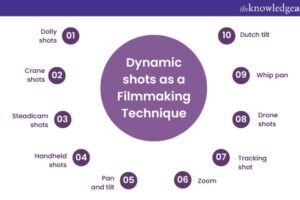Drawing a perfect circle movie is akin to creating a masterpiece on a blank canvas, where each stroke of storytelling, cinematography, and sound design contributes to the overall narrative. In this guide, we delve into the intricacies of this process, exploring how filmmakers can blend inspiration from the latest Telugu movies with the emotive power of Arijit Singh’s melodies to craft cinematic perfection.
Conceptualizing Your Story
Conceptualizing Your Story” is the foundational stage in the process of drawing a perfect circle movie. At this stage, filmmakers delve into the creative exploration of their narrative, characters, themes, and overall vision for the film. Here’s a deeper dive into this crucial aspect:
Inspiration from Latest Telugu Movies:
Drawing inspiration from the latest Telugu movies involves studying successful films within the Telugu cinema industry. This could include analyzing their storytelling techniques, character arcs, plot structures, visual aesthetics, and thematic elements. By understanding what works well in recent Telugu cinema, filmmakers can gain valuable insights into audience preferences and industry trends, which can inform their own creative decisions.
Incorporating Arijit Singh’s Melodies:
Arijit Singh’s music is known for its emotional depth and evocative lyrics, making it a powerful tool for enhancing the storytelling in a movie. Filmmakers can explore how Arijit Singh’s songs resonate with themes or emotions relevant to their story. Whether it’s a romantic ballad, a soulful lament, or an uplifting anthem, integrating Arijit Singh’s melodies into the narrative can add layers of emotion and resonance, enriching the viewer’s experience.
Crafting a Compelling Narrative Arc:
Central to conceptualizing a story is the development of a compelling narrative arc. This involves outlining the beginning, middle, and end of the story, as well as identifying key plot points, character arcs, and thematic motifs. Filmmakers must consider the journey that their characters will undertake, the conflicts they will face, and the resolutions they will seek. A well-crafted narrative arc provides structure and direction to the storytelling process, guiding the audience through a meaningful and engaging cinematic experience.
Developing Well-rounded Characters:
Characters are the heart and soul of any story, and their development is essential to creating a memorable and impactful movie. Filmmakers must invest time in fleshing out their characters, giving them distinct personalities, motivations, and arcs. Each character should feel like a fully realized individual, with strengths, flaws, and inner conflicts that drive their actions and decisions. By crafting well-rounded characters, filmmakers can create a rich and immersive world that resonates with audiences on a personal level.
Planning Your Perfect Circle
Planning Your Perfect Circle Movie” is the crucial phase where filmmakers transform their creative vision into a concrete roadmap for production. This stage involves meticulous planning and organization to ensure that every aspect of the film aligns with the intended artistic vision. Here’s a detailed exploration of what this entails:
Crafting a Clear Vision:
Before diving into the specifics of production, filmmakers must establish a clear vision for their movie. This involves defining the tone, genre, style, and overall aesthetic that they aim to achieve. By articulating their vision early on, filmmakers provide a guiding framework that informs all subsequent creative decisions.
Outlining the Narrative Structure:
One of the key components of planning a perfect circle movie is outlining the narrative structure. This involves mapping out the storyline, identifying key plot points, and determining the pacing of the film. Filmmakers may use traditional narrative structures such as the three-act structure or experiment with non-linear storytelling techniques to create a unique and engaging viewing experience.
Character Development and Arcs:
In addition to outlining the plot, filmmakers must also focus on developing compelling characters with meaningful arcs. Each character should have distinct personalities, motivations, and conflicts that drive their journey throughout the film. By fleshing out the characters early in the planning process, filmmakers can ensure that their actions and decisions resonate authentically with the audience.
Budgeting and Resource Allocation:
Planning a perfect circle movie requires careful consideration of budgetary constraints and resource allocation. Filmmakers must assess their financial resources and determine how best to allocate them across various aspects of production, including casting, location scouting, set design, and post-production. By creating a detailed budget and production schedule, filmmakers can effectively manage resources and avoid costly delays or overruns.
Storyboarding and Shot Lists:
Visualizing the film through storyboarding and shot lists is essential for translating the script into tangible images. Storyboards provide a visual roadmap for each scene, depicting the composition, camera angles, and key visual elements. Shot lists outline the specific shots needed to capture each scene, helping streamline the filming process and ensure that all necessary footage is captured during production.
Collaboration and Team Building:
Filmmaking is a collaborative endeavor, and planning a perfect circle movie requires assembling a talented and dedicated team. From producers and directors to cinematographers, actors, and crew members, each member of the team plays a crucial role in bringing the film to life. By fostering open communication and fostering a spirit of collaboration, filmmakers can harness the collective creativity and expertise of their team to achieve their vision.
Choosing the Right Tools
Selecting the appropriate equipment and software is essential for bringing the vision of a perfect circle movie to life. From cameras and lenses to editing software and sound design tools, filmmakers must choose tools that align with their creative vision and technical requirements. By investing in high-quality equipment and staying updated on the latest advancements in technology, filmmakers can achieve professional results that captivate audiences.
Mastering the Art of Cinematography
Mastering the Art of Cinematography” is a fundamental aspect of drawing a perfect circle movie, as it involves crafting visually captivating and thematically resonant images that enhance the storytelling experience. Cinematography encompasses a range of techniques and principles, from composition and framing to lighting and camera movement. Here’s a deeper exploration of what it entails:

Composition and Framing:
Composition refers to the arrangement of visual elements within the frame, while framing involves selecting the portion of the scene to be included in the shot. Cinematographers must carefully consider composition and framing to create visually compelling images that effectively convey the story and evoke emotion. This includes elements such as balance, symmetry, leading lines, and the rule of thirds, which help guide the viewer’s eye and create a sense of visual harmony.
Lighting and Shadows:
Lighting plays a crucial role in cinematography, as it not only illuminates the scene but also sets the mood, atmosphere, and tone of the film. Cinematographers must understand how to manipulate natural and artificial light to create dramatic effects, highlight key elements, and evoke specific emotions. This involves considerations such as the direction, intensity, color temperature, and quality of light, as well as the use of shadows to add depth and texture to the image.
Camera Movement:
Camera movement adds dynamism and energy to a film, allowing filmmakers to guide the viewer’s perspective and create a sense of immersion. Cinematographers must master various camera movements, such as pans, tilts, dollies, tracks, and crane shots, to effectively convey the story and enhance the visual storytelling. Each camera movement serves a specific purpose, whether it’s following the action, revealing information, or establishing a sense of space and scale.
Visual Aesthetics and Style:
Cinematography is also about developing a distinct visual aesthetic and style that reflects the filmmaker’s creative vision and enhances the overall storytelling experience. This involves making deliberate choices about color palettes, camera angles, aspect ratios, and visual motifs that reinforce the themes and emotions of the film. By infusing their cinematography with personal flair and artistic sensibility, cinematographers can create visually stunning and thematically resonant images that leave a lasting impression on viewers.
Collaboration with Director and Crew:
Effective cinematography is a collaborative effort that requires close coordination with the director, production designer, costume designer, and other members of the creative team. Cinematographers must work closely with the director to understand their vision for the film and translate it into visual language. This involves pre-visualization, shot planning, and on-set collaboration to ensure that the cinematography aligns seamlessly with the overall creative vision of the movie.
Filming Techniques and Tips
During the filming process, filmmakers must employ a variety of techniques and tips to capture compelling footage that aligns with their creative vision. Continuity, camera angles, and visual effects are just a few of the elements that filmmakers must consider as they bring their story to life on screen. By collaborating with a talented cast and crew, filmmakers can execute their vision with precision and artistry.

Perfecting the Post-production Process
In the post-production phase, filmmakers refine their footage through editing, color grading, and sound mixing to create a seamless and immersive viewing experience. Leveraging the latest advancements in technology and software, filmmakers can enhance the visual and auditory elements of their movie, ensuring that every frame is polished to perfection.
Distribution and Marketing
Once the movie is complete, filmmakers must navigate the process of distribution and marketing to ensure that it reaches its intended audience. Selecting the right platforms for release, crafting engaging trailers, and leveraging social media are all essential components of a successful marketing campaign. By strategically promoting their movie and engaging with audiences, filmmakers can maximize its reach and impact.
Drawing a perfect circle movie requires dedication, creativity, and attention to detail. By blending inspiration from the latest Telugu movies with the emotive power of Arijit Singh fees per song, filmmakers can create cinematic experiences that resonate with audiences on a profound level. With passion and perseverance, anyone can master the art of drawing a perfect circle movie and leave a lasting impression on viewers around the world.



